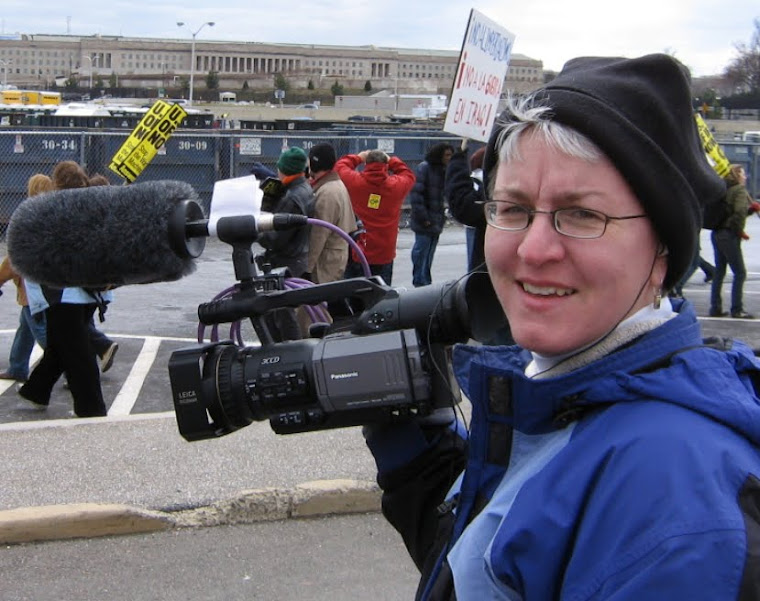Spring has many rituals. In Denver, for instance, April is tulip time. And I know that when spring rolls around each year, I will find myself speaking to students in the Culture, Gender, and Global Communication course offered by my colleagues Drs. Margie Thompson and Maria Suarez Toro. This spring was no exception, but the topic this year was different.
Students in the course study a variety of subjects through readings, class discussions and a variety of guest speakers with first-hand experience to match the theoretical work being studied. Not only was I presenting my film, Woodstock West: Build Not Burn, but I was using the topic to speak to some of the key issues in the class: How do the media portray outsiders and activists? What kind of narratives develop around resistance especially political resistance? How is social justice debated in the public? These are just a few of the questions framing the discussion for these students.
For me and my work with the film, I'm interested in many of these same questions. Our on-going research has been fascinating and telling. For instance, I recall one article in one of the local newspapers covering the end of Woodstock West. A police officer is quoted telling the reporter not to call the Woodstock inhabitants 'bad kids.' He said all his interactions with the students were positive. It's obvious that this officer wanted a new narrative to be written about this group of student protestors. His direct experience led him to understand the student cause on a level different than what he was used to in the media.
As a filmmaker and as an activist I readily believe that the greatest and most lasting social change happens when we tell each other our stories and when we listen to and experience the stories of others. This has happened time and again with my last film, SoleJourney, which highlights personal stories rarely heard in the media about lesbian, gay, bisexual and transgendered people. Over and over again we heard comments from filmgoers who said things like, "I've never seen a family with two gay fathers." "I've never known a lesbian grandmother."
It is in these moments of genuine human sharing that we recognize the humanity we have in common.





